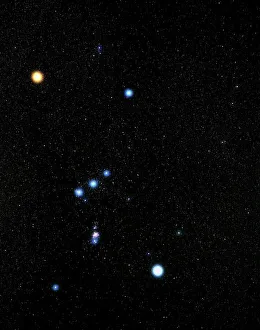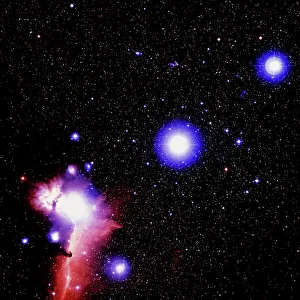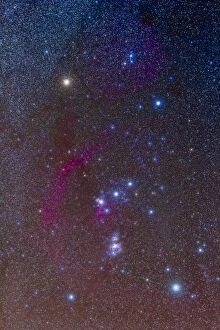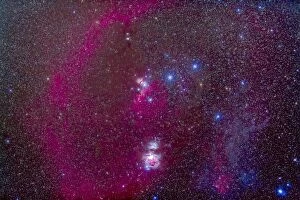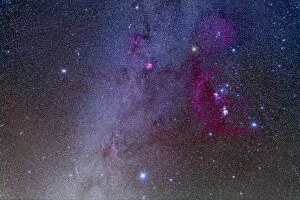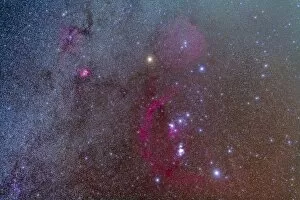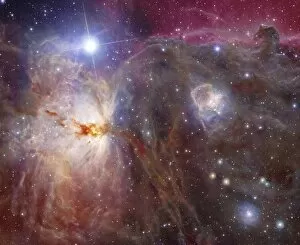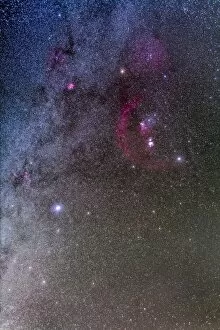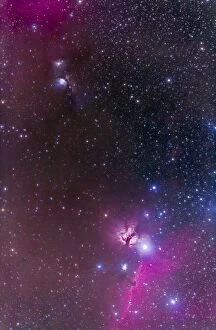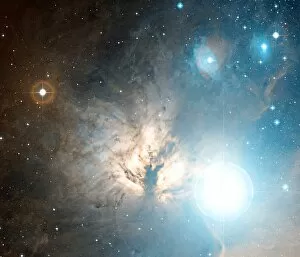Zeta Orionis Collection
"Zeta Orionis: Unveiling the Mysteries of the Orion Constellation" Gazing up at the night sky
All Professionally Made to Order for Quick Shipping
"Zeta Orionis: Unveiling the Mysteries of the Orion Constellation" Gazing up at the night sky, one cannot help but be captivated by the celestial wonders that adorn our universe. Among these captivating sights lies Zeta Orionis, a star nestled within the illustrious constellation of Orion. In an optical image showcasing the stars of Orion's belt, Zeta Orionis stands proudly alongside its stellar companions - Alnitak, Alnilam, and Mintaka. Together, they form a striking trio that has fascinated astronomers for centuries. The grandeur of the entire Orion constellation is truly awe-inspiring. Its brilliance illuminates our skies with unparalleled beauty and intrigue. The breathtaking sight of the famous nebulae within this region - including the mesmerizing Horsehead Nebula and Flame Nebula - adds to its allure. Orion's connection with Canis Major introduces us to two prominent dog stars: Sirius and Procyon. Their presence enhances not only their respective constellations but also enriches our understanding of cosmic relationships. Venturing beyond just individual constellations, we encounter another fascinating phenomenon known as "The Winter Triangle. " This triad consists of Betelgeuse in Orion, Procyon in Canis Minor, and Sirius in Canis Major – three radiant stars forming a celestial triangle that graces winter nights with their brilliance. Delving deeper into specific regions surrounding Zeta Orionis reveals even more wonders awaiting discovery. The enigmatic Horsehead Nebula beckons stargazers to explore its intricate features hidden amidst interstellar dust clouds while Monoceros unveils yet another realm filled with cosmic marvels. Astonishing images captured through infrared and visible light unveil an ethereal landscape around Zeta Orionis' domain – showcasing both its resplendent glory and mysterious depths like never before seen by human eyes. As we contemplate this vast expanse above us, it is impossible not to be humbled by the sheer magnitude of our universe.

